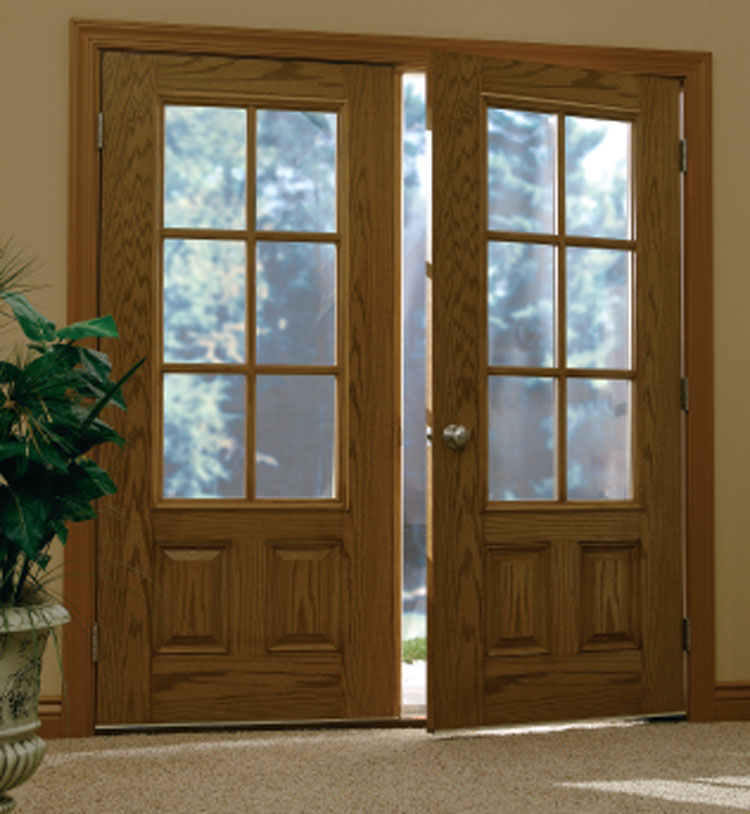
Interior doors play a significant role in defining the overall style, privacy, and functionality of your home. They are not just practical barriers between rooms but also a key element of your interior design. However, with so many options available, choosing interior doors can feel like a daunting task.
When choosing interior doors, the following key points are to be noticed:
The good news is that with a few guidelines, you can easily find the perfect doors that enhance the aesthetics and usability of your space. In this guide, we'll break down the essential considerations to help you make an informed decision and ensure a seamless door installation.
Before diving into the different types and styles, it's important to understand why interior doors matter. Beyond their obvious functional role of providing privacy and separating spaces, they also influence the flow and feel of your home.
The right door can create a harmonious transition between rooms, add architectural interest, and even improve energy efficiency and soundproofing. Therefore, choosing interior doors carefully is crucial for achieving both the aesthetic and practical goals of your home.
When choosing interior doors, consider door measurements, door swing, door trim, door size, and the material (whether solid core doors or hollow core doors). The style of the door should complement your home's architectural style, and ensure it fits with your door opening. Additionally, if soundproofing or energy efficiency is a priority, choose doors made from solid materials like wood or foam insulation-filled panels for better performance.
When it comes to choosing interior doors, there are several key factors to consider. These factors will help you find doors that not only match your style preferences but also meet your practical needs.
The style of the door is perhaps the most important aspect of your decision. Interior doors come in a variety of styles, each suited to different design aesthetics and functional needs:
Tip: When choosing interior doors, consider how the style complements your overall decor and the specific function of the room. For example, a French door might not be the best choice for a bedroom, where privacy is a priority.
The material of the door affects its appearance, durability, and cost. Here are some common options to consider:
Tip: For rooms that require more privacy, such as bedrooms or bathrooms, solid wood doors or solid core doors are excellent choices.
Getting the right size and thickness is crucial for a successful door installation. Standard interior doors are usually 80 inches tall, but the width can vary (24, 28, 30, 32, and 36 inches are common sizes). Thickness also matters; the most common thickness for interior doors is 1 3/8 inches, but thicker doors (1 3/4 inches) are also available for improved soundproofing.
Tip: Always measure the door opening accurately before purchasing. If you’re replacing a door, measure the current door and the frame to ensure the new door will fit properly.
Another key factor in choosing interior doors is the swing direction. Interior doors can swing in or out and to the left or right. Knowing which direction your door will swing is important for both functionality and safety.
Tip: Stand outside the room and imagine opening the door. If the hinges are on the left and the door opens away from you, it’s a left-hand door. If the hinges are on the right, it’s a right-hand door.
Soundproofing is a vital consideration, especially for bedrooms, offices, or rooms where noise levels can be high. Solid wood doors or solid core doors provide better soundproofing than hollow core doors. If you want to minimize sound transmission between rooms, opt for doors with a solid construction.
Tip: Consider adding a door sweep or installing a door bottom to further reduce noise.
The finish and color of your door should match the overall design of your home. You can choose from stained wood finishes, painted colors, or even unfinished doors that you can customize yourself. Neutral colors, like white, gray, or beige, are versatile and work with most interiors, while bold colors can make a statement.
Tip: For a cohesive look, match the door finish to your room's door trim, baseboards, and other woodwork.
When choosing interior doors, don’t overlook the importance of the hardware. The type of handle, knob, or lock you choose can greatly influence the overall look and feel of the door. Additionally, consider adding features like peepholes, louvers, or glass panels, depending on your needs.
Tip: Choose hardware that complements the style of the door. For instance, a modern flush door might look best with sleek, minimalist hardware, while a traditional panel door could benefit from ornate, vintage-style handles.
Once you've selected the right door, it's time to focus on the door installation process. Proper installation is key to ensuring that the door functions correctly and looks good. If you're not confident in your DIY skills, it may be worth hiring a professional to handle the installation. However, if you decide to do it yourself, follow these general steps:
Tip: Always check for alignment throughout the installation process to ensure the door hangs straight and swings properly.
Choosing interior doors is an essential aspect of home design that requires careful thought and consideration. By focusing on factors like style, material, size, soundproofing, and hardware, you can find doors that enhance both the functionality and aesthetics of your home.
For expert door installation services and personalized advice, contact Alexandria Home Solutions today. Let us help you create a stunning entrance that reflects your home's unique character.
Hollow core doors are lightweight and economical, often made with a wood fiber core and covered with veneer. They are less soundproof but ideal for low-traffic areas. On the other hand, solid core doors offer better soundproofing and durability, making them a great option for rooms that require more privacy. Both come in a variety of styles, from standard interior doors to French Doors, depending on the needs of your home.
When choosing between single-track and double-track doors, consider the available space. Single-track doors are ideal for narrower openings, while double-track doors offer more flexibility and are perfect for larger door openings, such as bifold doors or French Doors. Both types of doors can be used in different interior door types depending on the desired aesthetic and functionality.
The material of your interior doors greatly impacts their durability and appearance. Solid wood doors provide a classic, high-quality look, offering excellent insulation and soundproofing. Slab doors, which are simply the door without the frame, are often made from wood fiber or MDF for budget-friendly options. Prehung doors include the frame and are available in standard sizes, making installation easier for DIY projects.
When measuring for prehung doors, ensure you measure the door opening accurately for door size. The height and width should align with standard sizes like 80 inches in height and 36 inches in width. Consider whether the door will be inswing or outswing and note the straight edge of the frame material to ensure proper door alignment. For custom openings, consult with a door installation expert to ensure the slab door or solid core doors fit properly.
Yes, you can install French doors yourself, but it requires attention to detail. Measure the door opening to ensure the correct door size and straight grain alignment. You'll need to install a single-track or double-track system, depending on the style of French doors you choose. Keep in mind, French doors may require adjustments for door seals and door trim. For best results, seek door installation guidance or hire a door specialist to ensure a smooth installation process.
